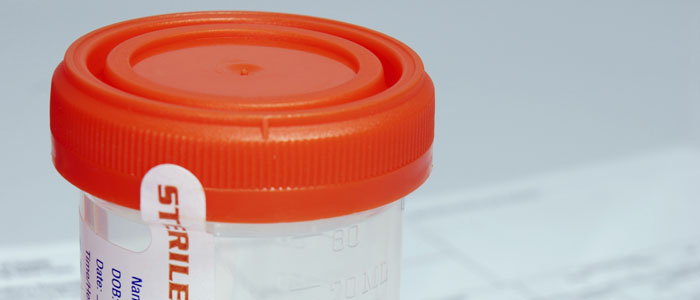Sponsored Content by IPS
Drug Screening Costs Can Be Controlled By Following Best Practices

The use of drug screening in workers’ compensation primarily came into being to ensure that injured workers were neither underusing nor abusing their opioid-based prescription medications.
But over the past few years, things have taken an unexpected turn, as drug testing has shifted from a relatively benign cost for payers to something very different.
In 2012, the California Workers’ Compensation Institute (CWCI) reported that drug testing was becoming a significant workers’ comp cost driver, as the CWCI estimated that for 2011, California insurers and self-insured employers spent $98 million on drug tests. CWCI’s study revealed that drug testing rose 4,537 percent from 2004 to 2011, increasing from 4,012 tests to an astounding 186,023. Average amount paid per test for that seven-year period? It skyrocketed from $81 to $207.
According to Greg Todd, CEO and founder of Integrated Prescription Solutions Inc. (IPS), with somewhere between 55 and 85 percent of injured workers being prescribed opioids for pain management, the chances of those powerful pain killers finding their way to the illegal market – called diversion – at $80 a pill go up considerably.
“That is significant street value and a powerful incentive for someone injured to get loaded up with prescriptions, though they may only need a quarter of it to control their pain,” Todd says. “When you look at that overall situation, there is a strong community of usage abuse, with incentive built into the system for abuse.”
Todd acknowledges that the overall marketplace for drug testing is skyrocketing, but he also says there is a way to get it under control – an approach with a proven medical monitoring strategy at its foundation.
“Unfortunately, there are some bad actors in the provider community that have come to see drug testing as a new profit center,” Todd said. “Their view is ‘you want them tested, I will test them all.’ ” With drug tests climbing to $1,200 for a full urine testing panel, it’s easy to see how costs are spinning out of control.
“Bottom line, you want the right test at the right time for the right information,” Todd says.
Frequency, Testing Methods
For a PBM to effectively manage drug testing costs, factors to consider include prescription duration, determining if there is a history of abuse or other medications in the injured worker’s system, Todd explained.
The key is to “drill down” into patient history to determine those who require more testing than others, so you can sort claimants into low-, medium- and high-risk levels. For those who are considered low risk, test only periodically and randomly, maybe twice a year, Todd said. For medium risk patients, test randomly, maybe up to 5 times a year while using both urine and an oral fluid sample (the latter can’t be tampered with).
Lastly, there are high-risk claimants, who have a significant duration of opioid usage and show clear signs of dependence and/or addiction. Those claimants should be tested once a month or even every visit. In many cases, Todd noted, these are already very expensive cases, so it’s also important to ensure they are not over-consuming or diverting their medications illegally.
“If it’s the former, those are cases whereby unmanaged providers can medicate the person to death,” Todd said. For most, it means requiring a drug rehab-based intervention, as a way to try to wean them off opioids. With the number of drug overdoses on opioids on the rise, it’s time for the workers’ compensation industry to step forward, Todd said.
“Eventually, the system will start spreading out the accountability for these deaths,” he said. “It could be the doctor or the organization that never monitored them that are culpable, or a combination of both.”
Medical Monitoring Best Practices
As a clear alternative and a way to reduce payer costs, Todd said PBMs like IPS are stepping forward to take clinical and medical oversight responsibility for quality care, with evidence-based outcomes driving the drug testing process.
“Something has got to give, because for workers’ compensation opioids are at the epicenter of the problem,” he said. “It starts with pain medication, and usually treatment begins with the strongest drug available.”
The result in many cases is the injured workers become dependent and can’t get back to work because they never can get back to the rehabilitation process, too doped up. As that cycle remains unbroken, payers and injured workers face the ever-increasing odds of permanent or partial disability.
“The whole drug testing process needs to be controlled and monitored by the PBM,” Todd said. “We need to closely scrutinize the problem folks taking higher doses (Excess of 100 MED/daily) and with increased frequency.”
To do that, IPS help clients monitor the process with a combination of peer reviews, Evidence based formularies, opioid monitoring alerts, fully integrated ODG guidelines with MED alerts directly to assigned adjuster or nurse case manager, interventions and effective, controlled drug testing. The clinical value and oversight will then help case managers be more effective, leading to a higher level of return to work.
When you summarize the value of medication monitoring, it save lives, reduces costs and increases return to work. And by using an effectively managed drug testing process, it’s much easier to verify that the patient is taking their meds properly.
A Clean, Easy to Execute Drug Testing Program
At IPS, the idea for effective, reliable and cost-controlled drug testing is to make it easy and accessible before things spin out of control. IPS coordinates all testing proactively, and the adjuster can initiate the process through the company’s website.
IPS sends drug testing kits right out to the patient’s physician, matching the type and frequency based on risk factors (low, medium or high) determined through its medical management program.
“We basically tell the physician ‘Here is the test,’ ” Todd said. “We take the decision-making on drug testing out of the physician’s hands. It is all prepackaged. They administer the test and send the results to a qualified lab in our network. This way, we control the quality, the methodology and also the cost.
“Everyone along the way – the physician, the payer and the claimant – benefits. Everyone wins,” Todd said.
Visit www.ipsusa.com or call toll free at 866-846-9279 for more information.
This article was produced by the R&I Brand Studio, a unit of the advertising department of Risk & Insurance, in collaboration with IPS. The editorial staff of Risk & Insurance had no role in its preparation.










